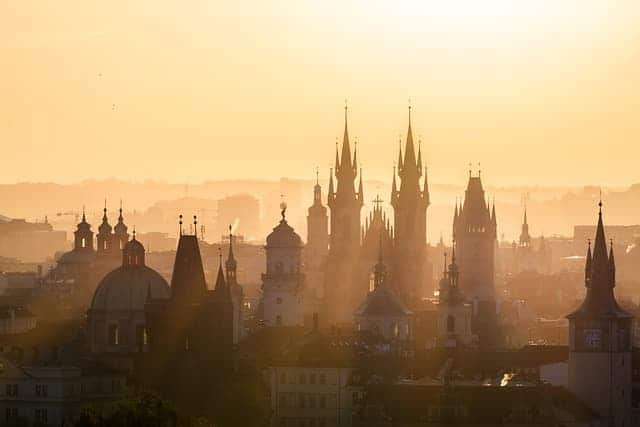Photographing classical or modern architecture is a serious challenge. However, the effort spent on taking pictures of buildings and urban historic landmarks is worth what the photographer most often gets as a result. Here are a few tips to help you not be afraid to shoot architecture – in your home community or tourist destination.
How to photograph architecture
- Be careful about the direction of light, as it can increase contrast, shadows, textures and reflections. High levels of contrast can cause cameras to misrepresent the picture. However, this can easily be overcome by using exposure compensation.
- Another trick is to line up shots with different exposure values (one shot for highlights, one for halftones and one for shadows) and then combine them in a special HDR program (such as Photomatix).
- Fisheye or wide-angle lenses are ideal for this genre of photography because they allow you to cover the entire building, along with its surroundings. Sometimes, however, it’s still difficult to capture the whole picture, in which case panoramic photography can help.
Photographing a building is not just about the facade. It can be difficult to correctly adjust the white balance in an interior, especially if it depends on different forms of artificial lighting. Interior photography in older buildings tends to be more tedious because traditionally there are small windows and doors and therefore not enough natural light.
Try using a tripod and a long exposure, and remember that you can always screw on a neutral filter to get rid of glare in daytime photography. Alternatively, you can plug in additional lighting, such as a remote flash, but be careful as this can rob the place of its atmosphere and special details.
When the sun goes down, completely new forms are born for architectural photography. To shoot a silhouette structure during sunset, position it between you and the sun. Make sure the flash is deactivated and the exposure is set to the sky. If the foreground is too bright, set the exposure compensation to a negative value to darken it. This effect can give the photo a special mystery.
Night shots can be very dramatic and atmospheric, but remember to shoot them when there is still some light in the sky, as it adds tone to the background and helps illuminate details somehow. As before, find a good position, set your camera on a tripod and wait for the dazzling reflection of city lights in windows, streetlights and signage – all in a rainbow of neon colors to create real magic. Use a wide open aperture and long exposure and, if your camera allows, you can use a low ISO to ensure that details aren’t ruined by noise.
Unlike other types of photography, breathtaking architectural images can be created in any weather. A church on a clear day can delight the viewer, but it can also look a little dull. But if you visit it again when there is a storm overhead, or fog rising from the damp ground, the result can exceed all expectations.
By shooting the same building in different weather conditions, a photographer can create a great portfolio. You can also choose the three best shots to make an interesting triptych.
Reflections bring a special accent to architectural photography and allow the photographer to create a picture in which a building can be playfully distorted. Cityscapes are dotted with many reflective surfaces, so you never have to go too far when you practice, such as: windows, water features, puddles and wet streets, sunglasses in people, rivers, or even contemporary art.
As you explore the history of architecture, you’ll be surprised that even a little information can be a powerful source of inspiration. Ask your tour guide to show you small but interesting views that may go unnoticed by the general public. Use a telephoto lens to zoom in and don’t forget your tripod to maintain longer exposures.
The average building is much taller than the tallest photographer, and so the photograph of the architecture will inevitably be a bit distorted. But this can also be used as a source of tension within the frame. Just position yourself as close to the base of the building as possible and point the lens straight up. If playing with perspective isn’t for you, then just step back and add a sense of scale to your image by including everyday objects like people, trees, vehicles, some benches, and more. To keep the details in the whole picture, you should opt for an aperture value in the order of f/14. Also try to sharpen the foreground or background by choosing a more open aperture.
Architectural photos shouldn’t just be aesthetic and graphic; they should also convey dynamics – so don’t forget about lines, light and shadows to make the shot more interesting and to account for the hierarchy of levels and areas.
Architecture is built on the principle of symmetry, so an emphasis on that in the end can enhance the composition, too. Find the center of symmetry by placing your hand between eye level and creating your frame around that center. Alternatively, free your frame from cold and sterile straight and right angles. Follow the principles of nature, including curves and circles as shadows or reflections, which can help soften the structure of the photo.
